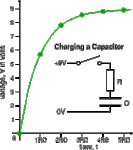- Joined
- Oct 26, 2007
- Messages
- 5,438
- Points
- 83
Dude, you need to get real about what is a "reasonable" price for such specialized equipment. Laser power meter heads are not mass produced like DVD players or other commodities that go down in price over time because of manufacturing improvements. They are very specialized sensors that require very high precision signal amplification to get right. The same technology that went into thermal heads in the 1970s is in the heads today. The only difference today is that thermal heads can detect beam positions and have their data built into the head itself. Even those are quite old, dating from the 90s.
The downside of such "improvements" is that now you can't connect your nice new coherent thermal head to your op-amp circuit via simple BNC connector, but instead need to have their special adaptors that can read off the data in their proprietary way.
You can expect that the price of such equipment will not go down simply for the fact that there is no reason to. These meters stay "good" for a long time, and can be recalibrated for far less than the cost of buying a new one. Furthermore, once you buy one, you don't need to get another until someone breaks it.
Laserbee's meter is about as close as you're going to get to a DIY-class meter of any reasonable accuracy and wavelength generality. The technology behind it isn't complicated, and you can get and assemble the parts if you put your mind to it. The thing is: it takes time and effort, and you need a reference meter to calibrate it with. It's the kind of thing that many people here don't have the patience to build or learn, so $150 for such a meter is a pretty good deal.
By the way, that "$600 Pentagon toilet seat" is a distorted legend. It refers to a mentioned estimate for the development + total manufacturing of specialized toilet seats on military aircraft, since such a toilet seat would need to withstand the mechanical wear of being on such an aircraft its long lifespan. The legend serves as an example of how stupid senators and the media latch onto such nonsense to serve their own interests.
The downside of such "improvements" is that now you can't connect your nice new coherent thermal head to your op-amp circuit via simple BNC connector, but instead need to have their special adaptors that can read off the data in their proprietary way.
You can expect that the price of such equipment will not go down simply for the fact that there is no reason to. These meters stay "good" for a long time, and can be recalibrated for far less than the cost of buying a new one. Furthermore, once you buy one, you don't need to get another until someone breaks it.
Laserbee's meter is about as close as you're going to get to a DIY-class meter of any reasonable accuracy and wavelength generality. The technology behind it isn't complicated, and you can get and assemble the parts if you put your mind to it. The thing is: it takes time and effort, and you need a reference meter to calibrate it with. It's the kind of thing that many people here don't have the patience to build or learn, so $150 for such a meter is a pretty good deal.
By the way, that "$600 Pentagon toilet seat" is a distorted legend. It refers to a mentioned estimate for the development + total manufacturing of specialized toilet seats on military aircraft, since such a toilet seat would need to withstand the mechanical wear of being on such an aircraft its long lifespan. The legend serves as an example of how stupid senators and the media latch onto such nonsense to serve their own interests.







